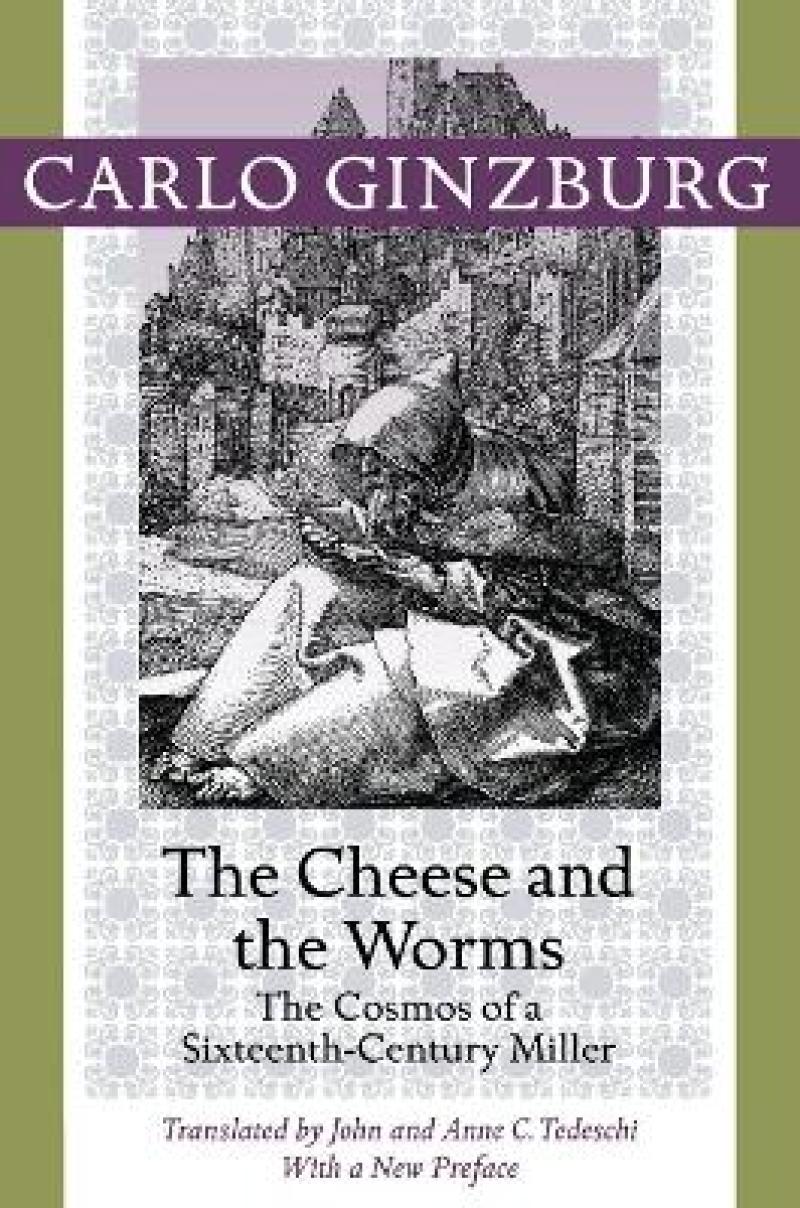The Cheese and the Worms is an incisive study of popular culture in the sixteenth century as seen through the eyes of one man, the miller known as Menocchio, who was accused of heresy during the Inquisition and sentenced to death. Carlo Ginzburg uses the trial records to illustrate the religious and social conflicts of the society Menocchio lived in. For a common miller, Menocchio was surprisingly literate. In his trial testimony he made references to more than a dozen books, including the Bible, Boccaccio's Decameron, Mandeville's Travels, and a "mysterious" book that may have been the Koran. And what he read he recast in terms familiar to him, as in his own version of the creation: "All was chaos, that is earth, air, water, and fire were mixed together; and of that bulk a mass formed-just as cheese is made out of milk-and worms appeared in it, and these were the angels." Ginzburg's influential book has been widely regarded as an early example of the analytic, case-oriented approach known as microhistory. In a thoughtful new preface, Ginzburg offers his own corollary to Menocchio's story as he considers the discrepancy between the intentions of the writer and what gets written.
The Italian miller's story and Ginzburg's work continue to resonate with modern readers because they focus on how oral and written culture are inextricably linked. Menocchio's 500-year-old challenge to authority remains evocative and vital today.
Les mer
Menocchio's 500-year-old challenge to authority remains evocative and vital today.
Preface to the 2013 EditionTranslators' NotePreface to the English EditionPreface to the Italian EditionAcknowledgments1. Menocchio2. The town3. First interrogation4. "Possessed?"5. From Concordia to Portogruaro6. "To speak out against his superiors"7. An archaic society8. "They oppress the poor"9. "Lutherans" and Anabaptists10. A miller, a painter, a buffoon11. "My opinions came out of my head"12. The books13. Readers of the town14. Printed pages and "fantastic opinions"15. Blind alley?16. The temple of the virgins17. The funeral of the Madonna18. The father of Christ19. Judgment day20. Mandeville21. Pigmies and cannibals22. "God of nature"23. The three rings24. Written culture and oral culture25. Chaos26. Dialogue27. Mythical cheeses and real cheeses28. The monopoly over knowledge29. The words of the Fioretto30. The function of metaphors31. "Master," "steward," and "workers"32. An hypothesis33. Peasant religion34. The soul35. "I don't know"36. Two spirits, seven souls, four elements37. The flight of an idea38. Contradictions39. Paradise40. A new "way of life"41. "To kill priests"42. A "new world"43. End of the interrogations44. Letter to the judges45. Rhetorical figures46. First sentence47. Prison48. Return to the town49. Denunciations50. Nocturnal dialogue with the Jew51. Second trial52. "Fantasies"53. "Vanities and dreams"54. "Oh great, omnipotent, and holy God . . ."55. "If only I had died when I was fifteen"56. Second sentence57. Torture58. Scolio59. Pellegrino Baroni60. Two millers61. Dominant culture and subordinate culture62. Letters from RomeNotesIndex of Names
Les mer
A wonderful book... Ginzburg is a historian with an insatiable curiosity, who pursues even the faintest of clues with all the zest of a born detective until every fragment of evidence can be fitted into place. The work of reconstruction is brilliant, the writing superbly readable, and by the end of the book the reader who has followed Dr. Ginzburg in his wanderings through the labyrinthine mind of the miller of the Friuli will take leave of this strange and quirky old man with genuine regret. -- J. H. Elliott New York Review of Books Ginzburg has excavated a marvelous and melancholy tale. Lay readers know that historical work of this order requires formidable skills and dogged research... Ginzburg's discovery of Menocchio is a dazzling entry into the historical world of popular culture. -- Lauro Martines Washington Post Why should we reread the story of Menocchio thirty-eight years after its publication? First, this new edition is a timely update. Ginzburg has penned a new preface and bibliographical information has been augmented. Second, because it is a work of rare scholarship that no student should forget, despite the fact that the context in which this book was crafted has significantly changed. -- Cristiano Zanetti Sixteenth Century Journal
Les mer
The now-classic tale of a sixteenth-century miller facing the Roman Inquisition.
Produktdetaljer
ISBN
9781421409887
Publisert
2013-12-10
Utgiver
Vendor
Johns Hopkins University Press
Vekt
340 gr
Høyde
235 mm
Bredde
156 mm
Dybde
15 mm
Aldersnivå
U, 05
Språk
Product language
Engelsk
Format
Product format
Heftet
Antall sider
224
Forfatter
Preface by
